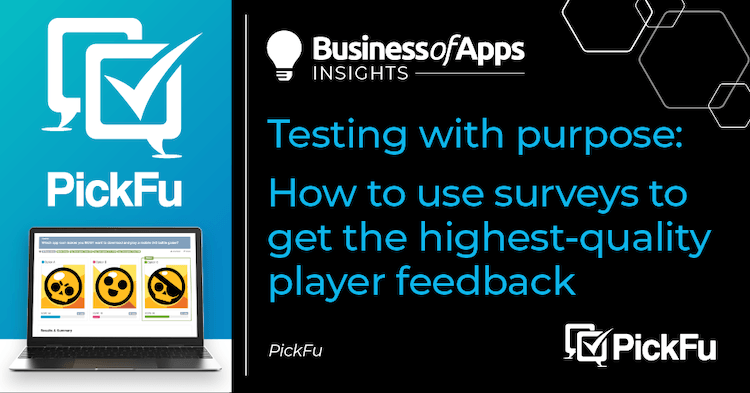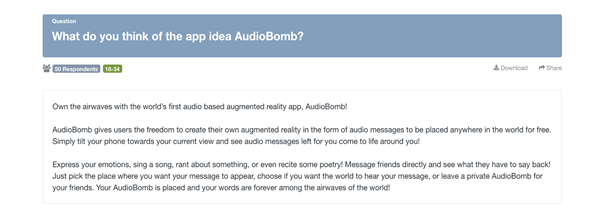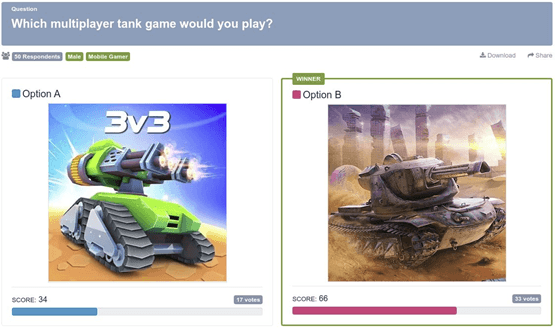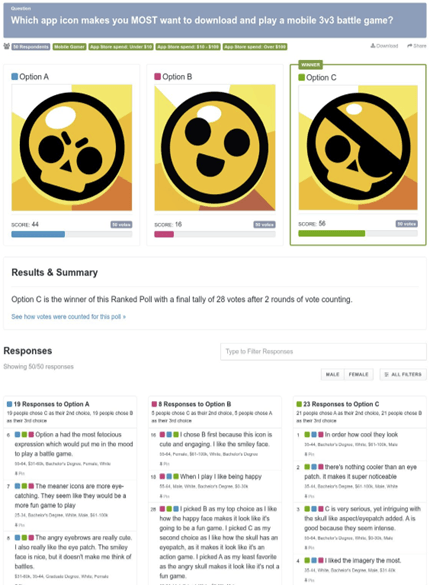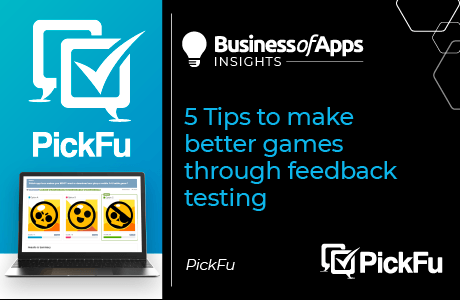The best developers don’t just build games people play. They use the right kind of testing to build games that people will want to play again and again.
I’ve already written about why you should use surveys and feedback testing in your iterative process. Online surveys are a simple way to gain insight into player preferences as you cycle through development. In this article, we’ll talk about the next step: how to get the most meaningful feedback so you can create high-quality content that keeps players coming back.
Know what you’re looking for
Using surveys and data to support your development process goes beyond crunching numbers. It’s identifying patterns in user feedback and turning them into opportunities to increase engagement and retention.
But before you do any kind of testing, you need to be clear on your goals and the type of feedback that will be most valuable. Do you want to learn more about the people who play your game or use your app? Do you want to find out what they think of certain features or mechanics of your game?
Two types of testing can help you, depending on the feedback you’re looking for.
- User testing helps you understand your audience’s thoughts and preferences, and what you need to make them happy. You might ask users how they feel about your game’s art style or about specific features. This type of testing can begin as early as the wireframing phase.
- Usability testing takes a step back from the user to focus on functionality and quality assurance. By testing the features or mechanics of your game, you can make sure it’s working correctly. Usability testing requires a working prototype so you can identify and resolve any malfunctions.
Testing from the conceptual stage through each update or code change will help ensure you’re meeting your goals and your players’ needs.
Run the right kind of survey
Once you identify the data you need, it’s survey time. In game development, the following four tend to be the most common types of online surveys. One isn’t necessarily better than the others; again, it depends on your goals and specific projects:
- Open-ended survey. Ask a question and get written feedback. This type of survey works well if you’re describing a concept or character or showing an image or text, or you want detailed opinions that you wouldn’t get from a simple yes/no or multiple-choice survey.
An example of an open-ended survey question
- A/B testing. Also known as split testing, A/B testing compares two versions of something, such as your app icon or UI, to see which performs better with users. You can quantify responses to get a clear winner.
An example of A/B testing different styles of an app icon
- Ranked poll. In a ranked poll, you present multiple options and ask survey respondents to rank them in order of preference.
An example of written feedback in a ranked poll
Performance marketers are shifting budgets to Browser Advertising 📈
Learn how brands like Walmart, Expedia and Nike drive incremental growth by reaching high-intent users before they hit search.
Get Your Free Guide- Head-to-head poll. This type of poll pits three or more options in a round-robin format. Respondents choose their favorite in each matchup. The results are aggregated to determine rankings and an overall winner.
Set up your survey for success
You’ve determined the type of survey you want to run and the data you need to collect. There are still a few more steps to creating an effective survey that will return the most meaningful data.
- Get specific with your audience. Your audience should reflect your game’s intended end-users; after all, their opinions and preferences will be most relevant to what you’re developing. Online surveying tools like PickFu give you the option to target audiences by a range of demographic and behavioral traits (App Store spend, gaming frequency, and more) from a readymade panel of more than 10,000 people.
- Explain the unexplained. Make sure your survey respondents have all the background information they need on what you’re testing. For example, if testing a feature of your game, explain how it’s meant to work so respondents can identify any flaws.
- Test one thing at a time. Pinpoint the one aspect you need feedback on and focus your survey on that. Testing more than one element at a time is a recipe for skewed data. This rule also goes for how you format survey questions. A so-called double-barreled question — which is essentially two questions in one — confuses respondents and leads to confusing results.
- Dig deeper. Feedback testing is ongoing and a little like a treasure hunt. Follow up with respondents who provide particularly useful feedback. You’re likely to get even deeper insights that can only help you refine your concept, characters, design, and overall gaming experience.
In summary
Getting feedback throughout the development process is crucial to building a high-quality game that keeps players returning for more. Specialized online surveying tools do much of the heavy lifting for you without draining your resources. But the data is only as effective as the thought you put into collecting it. Prepare and target your surveys appropriately, and you’ll be able to gather the most useful insights that will lead to a better game and a boost in engagement and retention.



